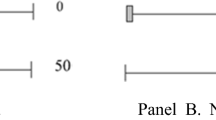Concluding remarks
The problem of the CGS requires no new tools of analysis. The precedent for including quantities of specific goods consumed by one person in the utility function of another person was established by Duesenberry (1949). Daly and Giertz (1972: 2) formalized the case in which simple awareness of what others are consuming can foster disutility as well as utility. This is a departure from the earlier view of Mill (1859: 78), who denied economic significance to the disutility of persons ‘... who consider as an injury to themselves any conduct which they have a distaste for, and resent ... as an outrage to their feelings.’ In these studies and that of Danielson (1975), the disutility associated with the consumption of a particular good is reduced by redistributing that good.
The prospect of reducing disutility, not by redistributing the offending good but by reducing its total consumption is posed by Mishan (1969: 339), but there the problem is some physical by-product of consumption rather than pure awareness that the good is being consumed. In the present paper, it is the awareness that a particular good or service is being consumed that causes disutility to people who do not wish to consume that good themselves.
The basic model here is that of the Samuelson public good, except that it is a ‘bad’, and the quantity of that bad is the total quantity consumed. There is thus a double summation: a vertical summation of marginal rates of substitution by nonconsumers and a horizontal summation of quantities consumed. The latter summation has no precedent as an argument in utility functions, and its significance may be questionable. Giertz and Sullivan (1977) develop a model in which consumption of a particular good by multiple recipients gives utility to multiple donors. But they are careful to assume that each of the n recipients consumes the same quantity. In the case of a CGS such an assumption would be unrealistic. However, it appears that horizontal summation may be crucial to the derivation of an efficient sumptuary tax for the CGS.
Similar content being viewed by others
References
Daly, G., and Giertz, J.F. (1972). Benevolence, malevolence and economic theory. Public Choice 13: 1–19.
Danielson, A.L. (1975). A theory of exchange, philanthropy and appropriation. Public Choice 24: 13–26.
Duesenberry, J. (1949). Income, saving and the theory of consumer behavior. Cambridge: Harvard University Press.
Giertz, J.F., and Sullivan, D.H. (1977). Donor optimization and the food stamp program. Public Choice 29: 19–35.
Kohn, R.E. (1975). Air pollution control: A welfare economic interpretation. Lexington: Heath.
Mill, J.S. (1859). On liberty. New York: Norton, 1975.
Mishan, E.J. (1969). The relationship between joint-products, collective goods, and external effects. Journal of Political Economy 77: 329–348.
Musgrave, R.A., and Musgrave, P.B. (1984). Public finance in theory and practice. New York: McGraw-Hill.
Solomon, R.L., and Corbit, J.D. (1973). An opponent-process theory of motivation. Journal of Abnormal Psychology. 81: 158–171. Reprinted 1978 in the The American Economic Review 68: 12–24.
Author information
Authors and Affiliations
Rights and permissions
About this article
Cite this article
Kohn, R.E. Optimal quantity of a controversial good or service. Public Choice 51, 81–86 (1986). https://doi.org/10.1007/BF00141687
Issue Date:
DOI: https://doi.org/10.1007/BF00141687




